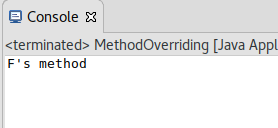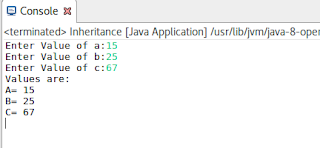The electrical resistance
R of a cylindrical wire with length l (in meter) and diameter d (in meter) can be computed from the area A of its diameter (m2) and the resistivity Ρ of the material (rho, meter times Ohm). The formula:
R=P*(l/A)
Code::
/*
* To change this license header, choose License Headers in Project Properties.
* To change this template file, choose Tools | Templates
* and open the template in the editor.
*/
/**
*
* @author mrdishant
*/
import java.util.*;
public class Resistance {
public static void main(String[] nt)
{
Scanner in=new Scanner(System.in);
System.out.print("Enter Length of wire:");
double length=in.nextDouble();
System.out.print("Enter Diameter of Wire:");
double d=in.nextDouble();
System.out.print("Enter Resistivity of wire:");
double p=in.nextDouble();
double r=p*(4*length/3.142*d*d);
System.out.println("Resistance of Wire:"+r);
}
}
Output::






